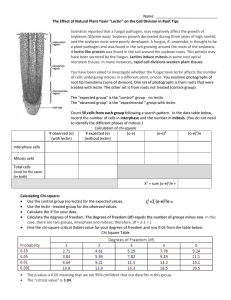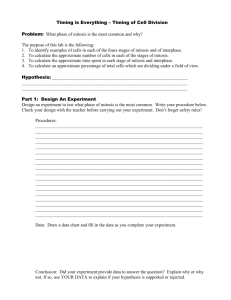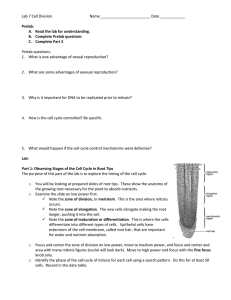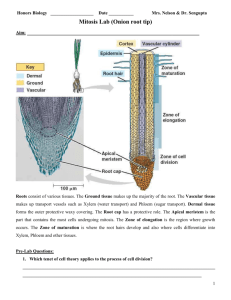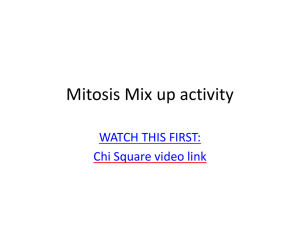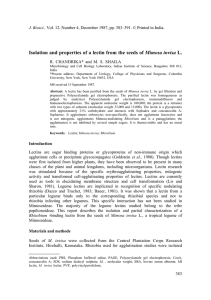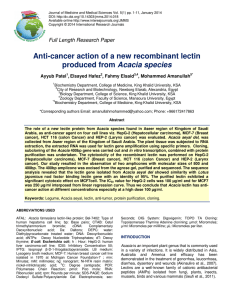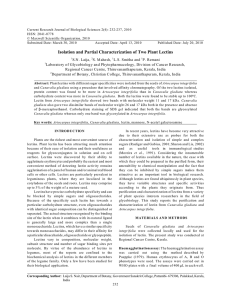Cell Cycle & Chi-Square Review: Mitosis & Lectin
advertisement
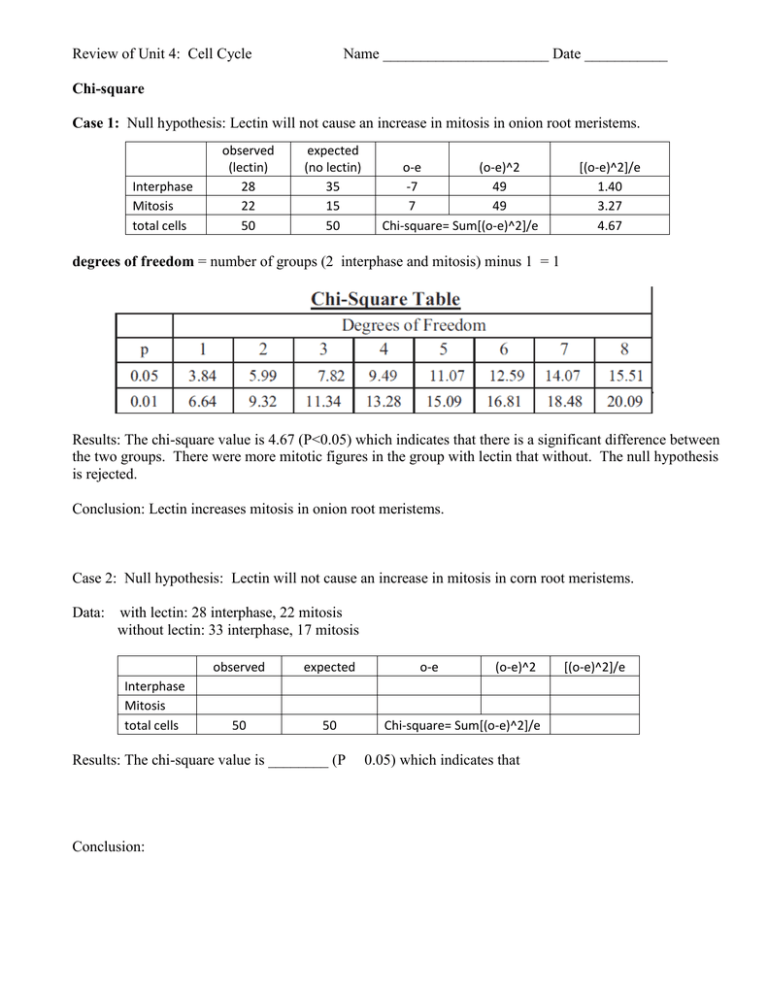
Review of Unit 4: Cell Cycle Name ______________________ Date ___________ Chi-square Case 1: Null hypothesis: Lectin will not cause an increase in mitosis in onion root meristems. Interphase Mitosis total cells observed (lectin) 28 22 50 expected (no lectin) 35 15 50 o-e (o-e)^2 -7 49 7 49 Chi-square= Sum[(o-e)^2]/e [(o-e)^2]/e 1.40 3.27 4.67 degrees of freedom = number of groups (2 interphase and mitosis) minus 1 = 1 Results: The chi-square value is 4.67 (P<0.05) which indicates that there is a significant difference between the two groups. There were more mitotic figures in the group with lectin that without. The null hypothesis is rejected. Conclusion: Lectin increases mitosis in onion root meristems. Case 2: Null hypothesis: Lectin will not cause an increase in mitosis in corn root meristems. Data: with lectin: 28 interphase, 22 mitosis without lectin: 33 interphase, 17 mitosis Interphase Mitosis total cells observed expected 50 50 Results: The chi-square value is ________ (P Conclusion: o-e (o-e)^2 Chi-square= Sum[(o-e)^2]/e 0.05) which indicates that [(o-e)^2]/e Case 3: Lectin was tested on radish roots. Null hypothesis: ___________________________________________________________________ _________________________________________________________________________________ Data: with lectin: 25 interphase, 25 mitosis without lectin: 34 interphase, 16 mitosis Results: Conclusions: Things to consider: 1. What are the advantages of sexual reproduction to a population? 2. Discuss three ways sexual reproduction leads to genetic variation. 3. How is the cell cycle controlled? 4. What happens if the cell cycle is not well controlled? Include apoptosis and p53 as part of your discussion. 5. What would happen to mitosis if a cell’s tubulin is not functional? 6. What are the differences between mitosis and meiosis?

